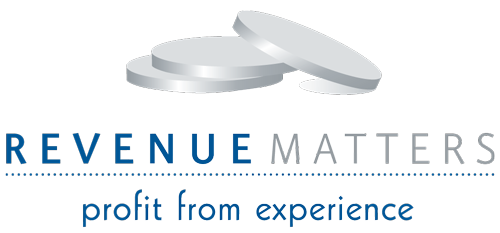by Kristie Dickinson, CHMWarnick, Kate Burda, Kate Burda & Co, Trevor Stuart-Hill, Revenue Matters | Apr 21, 2020
An asset manager, marketer and revenue-management practitioner walk into a bar (6 feet apart, of course). While this may sound like the beginning of a joke, what we are all facing in the hospitality industry at the moment is not a laughing matter. It is important to recognize that taking a thoughtful approach to revenue strategies now will pay dividends in the future.
To help with that, International Society of Hospitality Consultants members Kate Burda, founder of Kate Burda & Co., a revenue management and marketing company; Kristie Dickinson, EVP of CHMWarnick, a hotel asset management and owner advisory services company; and Trevor Stuart-Hill, founder/president of Revenue Matters, a revenue management consulting company, shared their perspectives on some tough questions that hospitality professionals, sales leaders and revenue strategists likely are facing at the moment. Below are the highlights from that exchange.
Faced with single-digit occupancy and many hotels electing to suspend operations while there is virtually no revenue, what should we be doing right now from a revenue strategy perspective?
Burda: During this lull period, and as we think about how to approach recovery strategically, the name of the game is to create demand in order to emerge in a highly competitive position. Now is when sales and marketing teams can be having meaningful conversations with customers so that they can be there with them at what we refer to as the “point of inspiration” versus. “point of sale.” The same thinking applies to other segments and travelers.
Dickinson: Interestingly, some hotels have emerged as a critical part of current relief efforts, and in doing so are capitalizing on opportunities in an otherwise halted travel environment. We’re seeing this at some of our hotels that remain open and in a position to accommodate the medical community, including first responders, [the Federal Emergency Management Agency] and related agencies providing aid. Brands have also jumped on the bandwagon, offering special discounts and packages tailored to medical personnel, so there is some demand that needs a home, albeit limited. In terms of what revenue managers can do now to set the property up for future success, first recognize that using history as a guidepost is out the window, including pace, pricing and segmentation. The recovery ramp-up could very well begin during what has historically been a shoulder period, so pricing and segmentation strategies need to be completely revisited to optimize ramp-up. We need to be strategic and ready to capitalize on demand and pricing opportunities as they unfold.
Stuart-Hill: Although now politically charged, the saying “never let a good crisis go to waste” does have some merit in this context. Now is an excellent time for revenue strategists to clean up rate plans, rethink distribution strategies, analyze channel costs (and profit contribution), update merchandizing and think through what rate plans will have most action following the crisis. There is also a lot of valuable data contained in systems other than the [property-management system]. My advice is to take advantage of this time to dig in and discover opportunities and trends that can help you as you emerge from this crisis.
We like to draw on lessons learned from past events, and it is probably not too early to be talking about lessons that are unfolding daily. What mistakes should we avoid at all costs as we look toward recovery?
Dickinson: The single biggest mistake we should avoid is sabotaging rate recovery. Rate is the key to regaining lost profits, today more so than ever, in light of rising acquisition and operating costs in general. It took the industry 10 years to climb back out of the hole that resulted from heavy discounting during the last downturn. With margins extremely tight prior to this shock event, I’m not sure owners can afford to do that this time around and will be relying on their asset managers to be sure the operator’s strategy is sound and bottom-line driven.
Stuart-Hill: In the past, as Kristie highlights, the industry experienced a “race to the bottom” in terms of [average daily rate]. The “smoking gun” explanation is that ADR erosion stemmed from incorrect pricing practices, which reflected a desperate attempt to retain occupancy levels. Other less publicized contributors to ADR erosion were shifts in market segmentation and channel contribution. Until recently, that data simply wasn’t readily available, so some industry analysts mistakenly equated ADR changes with changes to pricing. That said, ADR performance more closely impacts net operating income and asset value at most properties versus other factors such as occupancy, fixed costs or variable costs, so truly understanding these factors at your property will help guide pricing and mix decision-making.
Burda: I hate to be a pessimist, but we didn’t learn the lessons from black swan events of the past. We saw revenue management drop rates during 9/11 and again after the financial crisis. We saw salespeople sell to rate and to product. It hasn’t changed. As Trevor points out, our technology and approach has gotten much more sophisticated for the revenue-management practice. Yet today we have the same sales processes that were there before. In fact, we have digressed. In the course of our work with clients we ask, “If lead-generation services were to dry up, how would you find leads?” 95 percent said they would go to historical data. In one instance, out of a 120-salesperson organization, there was not one that talked about their approach to expanding into other parts of the business or into new companies and organizations. They all were looking at past or were perplexed if a lead wasn’t given to them by a third party.
We hear a lot about contingency planning from a cost perspective, but at the same time, we’re also modeling revenue return strategies around deployment to include shifting of marketing dollars, segments and tiers. What thoughts do you have around recovery-oriented business plans, with an eye toward optimizing the speed at which a hotel can recover?
Burda: It is absolutely critical and must be done. What we typically find in a “VUCA” (Volatility, Uncertainty, Complexity and Ambiguity) environment is that teams may need help with critical thinking. It is not only the marketing resources, but sales as well. It is the two practices that create demand and to do so, a team must:
Look at financial modeling based upon not just the segments, but what is happening within the world. The ‘now’ and for the short-term.
Build a strategy based upon the customer’s point of view. How do we help serve that customer beyond rates, dates and space, and in return we are able to create demand, thus revenue?
Sales and marketing look at what is the customer-buying journey and engage at the point of inspiration, where we can own mind share, then market share and share of wallet.
Stuart-Hill: I think there is value in understanding historical performance for a property, but it would be a mistake to simply dust off an old marketing plan and tweak it. Now would be an excellent time to take a step back and reassess where business is likely to come from in the near term and in the longer term. Despite the anxiety and pressure that likely exists, my suggestion is that key stakeholders take time to have open dialogue about what has worked well, what needs to be changed and where other opportunities may exist. Watch out for the “assumption” trap. As Kate pointed out earlier, things will undoubtedly be different, so the same old approach isn’t likely to be the most effective.
Dickinson: Regardless of whether operations have been temporarily suspended or operating at minimal occupancy, now is the time to be developing recovery plans that address all aspects of sales and marketing, from pricing to deployment of staff and resources. These plans should include a view of which segments will most likely be recovering first, specific to a hotel’s given market, product and tier, and include strategies for reaching out now to glean how key accounts are planning for future and how you can best market to new business opportunities that may come out of this event.
Where do you see the greatest opportunities by product tier on the other side of this crisis?
Dickinson: Although nearly everyone will undoubtedly desire travel as we emerge from quarantine, the economic reality for many couples and families is that vacations may not be in the budget for quite some time. Given this, I would anticipate leisure travel to lag somewhat in this recovery, impacting resorts that are not reasonably located in “drive-to” markets and particularly those highly dependent on airlift. I believe we will have a significant amount of pent-up corporate transient travel, so I expect major metro urban hotels may get some early lift as travel budgets restore. And, of course, group events which have rebooked for Q4 may support recovery at select properties. Recovery of large group-house hotels will depend on how quickly the country will be ready (or permitted) to congregate in a large-scale meeting venue, and the degree to which hotels can alleviate safety concerns. It may be a while.
Stuart-Hill: I agree with Kristie that major metro urban markets will see some early lift and I think this is likely to come from corporate travel and the small-meetings market. Data relating to group recovery will likely be skewed as many meeting planners that had meetings planned in the March—May time frame haven’t canceled but have rebooked for later in the year. I expect that many leisure travelers will avoid destinations with a higher population density and will seek suburban, rural and resort experiences first. More specifically, a sharp recovery for domestic drive-market resort and vacation rental destinations is likely as some more affluent travelers decide to forgo an overseas trip for something closer to home.
Burda: Right now: economy and extended-stay. They have a population that is stabilized. On the other side, honestly, I don’t see the opportunity by product tier. Where the opportunity lies is in how we become more relevant to our most-profitable customers, shifting the emphasis away from product and toward what matters most to the customer. This includes, of course, looking at how we can get more revenue per square foot, but beyond that, it’s how does each discipline (sales, marketing and revenue management) integrate into a strategy for optimizing revenue.
Based on the data available (which is changing daily), what words of encouragement do you have for properties in the U.S.?
Burda: Strategic planning works, particularly in this VUCA environment. In almost all cases, it is most successful creating change from the outside in. Having a trusted advisor to help you co-create what that looks like is critical. As the market is dynamic and continues to shift, make sure you have the foundation and framework to realize those shifts and pivot accordingly. What worked in the past … worked in the past. Organizations, namely your customers, are working on how their business is shifting. From this, there will be great opportunities, so invest this time in strategic planning and training your teams to think differently to take advantage.
Dickinson: Recovery isn’t an “if” it’s a “when.” From an asset-management standpoint, we view this unique period of time as an opportunity to prepare for the recovery from a very strategic standpoint, focused on capitalizing on opportunities rather than reacting in desperation. Data tells us that lowering prices is a race to the bottom, so I’m hopeful we can revisit this data, as well as lessons learned from this time that inform how we might re-engineer the operating model to control costs, as well as to better care for our employees and guests. We have an opportunity and an obligation to be proactive participants in our own recovery.
Stuart-Hill: COVID-19 isn’t the first shock our industry has experienced and there will always be a demand for travel. The key is how frictionless the travel experience will be and what new expectations our guests will have. If you have the luxury of time at the moment, take advantage of the opportunity to think and collaborate so that you emerge stronger and even better prepared on the back end of this unprecedented historical event.



